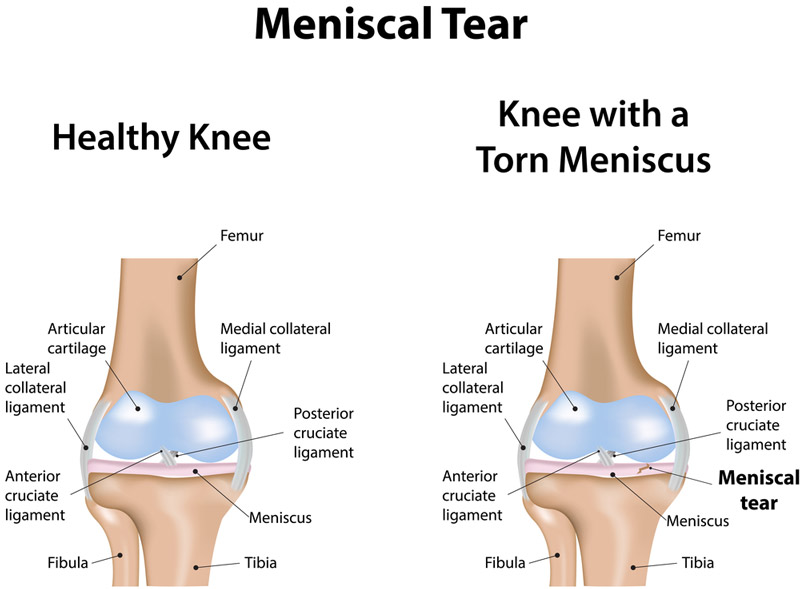Meniscus Pain Repair

Meniscus – What is it? How does it get torn/injured? Surgeries to fix it?
The knee contains three bones: the tibia, the femur, and the patella. They are vital to the proper function of the joint, however they do not function alone but are rather supported by a smooth material known as cartilage. Cartilage is essentially used by the body as a cushion, especially when it comes to knee functionality. One of the most important types of cartilage in the knee is the meniscus. The meniscus, located between the tibia and the femur, works to absorb shocks to the knee in order to reduce the overall stress it experiences. There are actually two menisci located in the knee, one at the outer corner of the knee and one in the inner.
How is the meniscus torn or injured?
There are a few different ways that a meniscus can be injured or torn. The most common origin of meniscus injuries occurs when the knee twists suddenly while the feet remain firmly in place. This is something that tends to happen often in certain sports. Any position that causes your knees to swivel while your feet remain in place can lead to this kind of an injury.
Meniscus tears can vary quite a bit in severity and size. To help categorize meniscus injuries, they are placed within one of three main grades. Grade one injuries include those that have a small focal point of hyperintensity. They also demonstrate not extension of the articular surface. Grade two injuries, on the other hand, are a bit more serious. They include abnormal hyperintensity that is linear in nature and minimal extension reaching the articular surface. Note that grade two injuries are then broken down even further depending upon the hyperintensity and extension present.
Injuries that belong to grades one and two are not typically considered to be serious issues. They will typically heal cleanly and cause minimal discomfort throughout the healing process. Grade three injuries, however, are far more serious in nature. These injuries are more accurately known as tears, and they have a few different options when it comes to treatment plans designed to heal the injury and return normal range of motion to the patient’s knee.
Treatment for Meniscus Tears
Meniscus tears may or may not need to be treated surgically. If the patient has a diagnosed tear but their physical examination and symptoms are inconsistent with this diagnosis, then surgery might not be necessary. In situations where surgery is needed, there are a variety or procedures that might be used. These include:
- Arthroscopic Repair
- Arthroscopic Total Meniscectomy
- Arthroscopic Partial Meniscectomy
It should be noted that meniscus surgery is low-risk in nature and the potential for complications is relatively low. Recovery time can vary; however, it will likely run at least a month. During this time, it is advisable to keep weight bearing on the affected knee as low as possible. Physical therapy might also be recommended in order to help the knee regain the typical range of motion.
